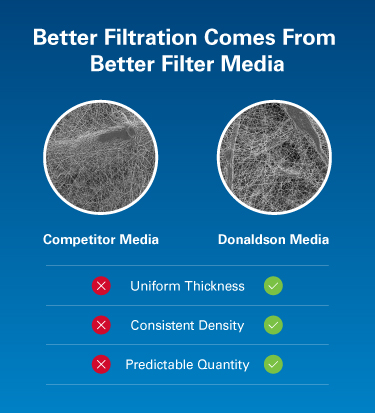

Experience, ingenuity and collaboration can help automotive OEMs and tier suppliers meet their most pressing needs for sustainable innovation, enhanced reliability and cost in use.
Dow Corning Corporation, a global leader in silicone and silicon-based technology and innovation, is building on its rich heritage of problem-solving success in the world’s automotive industry with exactly that premise. Over the course of more than six decades since its founding, the firm has supported the industry’s quest for increasing performance, reducing costs and meeting regulatory requirements. A wide range of high-performance materials, silicones as well as other specialties, has helped develop effective solutions for improving vehicle safety, reliability, comfort, fuel efficiency and sustainability.
Today, this silicone pioneer claims market intimacy, innovative thinking, customized products and worldwide commercial resources as keys for getting the job done right for its automotive customers. Self-described, Dow Corning is “One Company with Many Automotive Solutions.” Applications for Dow Corning® brand performance adhesives and sealants, Silastic® brand engineered elastomers, and Molykote® brand Smart Lubrication™ solutions are found in most vehicle systems. Branded materials from other business segments add to the depth of the company’s automotive involvement.
Dow Corning, with headquarters in Midland, Michigan, USA, is equally owned by The Dow Chemical Company and Corning, Incorporated. More than half of its annual sales are outside the United States.
Automotive Industries (AI) asked Patrick McLeod, Vice President, Specialty Chemicals Business, Dow Corning Corporation, how the company’s science has impacted automotive design over the years.
McLeod: Silicones really took the industry by storm, starting in the ’50s and continuing to this day. Some of the key advances in vehicle reliability, durability and safety might be credited to the impact silicone science had on the industry. Silicones could do some jobs no other material could do, and other jobs better. As designers and engineers discovered the advantages of silicones – their multiple forms, unique properties and broad functionality – a steady stream of applications resulted.
These included silicone rubber for ignition cables, spark plug boots and emission controls; sealants for engines and windshields; adhesives for component assembly; special-purpose lubricants; fluids for vibration dampers and viscous coupling; and additives for car polishes, cleaners and more. Silicone release agents, surfactants and moldmaking rubber became common industry process aids. Silicon-based semiconductor compounds, silicone encapsulants and thermal-interface materials helped spur the rapid growth of automotive electronics. Our friction-control additives enhanced the NVH performance of brake pads and linings. Of course, Dow Corning also led the way in silicone fabric coatings and seam sealants for airbags and inflatable curtains.
AI: What are Dow Corning’s greatest assets for meeting the ever-changing industry needs?
McLeod: While history may prove experience as well as capability, our Dow Corning team must anticipate and understand exactly what’s required for today’s and tomorrow’s business environment. Our structure and culture of problem-solving innovation stems right from the top of the organization, but our proofs of success are measured on the bottom line. We cannot stop investing in the near term and jeopardize the long term. We search and reapply existing technologies – tried, true and trusted to deliver results with known costs and reduced risks – while we also innovate to lower our costs and bring our history of creativity to bear on advanced technologies. This foundation enables our robust research on game-changing breakthroughs that will serve to balance our overall growth portfolio.
Certainly, Dow Corning’s talented people, proven expertise and global resources are great assets to have. Yet, how we deploy those assets is far more important. So, we are decidedly customer-centric in our strategic planning and tactical execution for meeting tough challenges, no matter where on the value chain, vehicle system or geographic region. Long gone are the days that we may have invented a new material and left it up to the OEMs or their suppliers to find viable applications for that potential problem-solver. In contrast, now working hand-in-hand with many of the key suppliers to the vehicle makers, Tiers 1 and 2 especially, our materials experts are collaborating – not exactly co-engineering, per se – to develop customized solutions that can meet specific design objectives, cost targets and/or industry regulations. We are proud of how our market intimacy, experienced insight, innovative thinking and relationship building work together to get results.
AI: How is Dow Corning contributing to green design?
McLeod: Dow Corning has a formalized focus on “Eco- Innovation.” At the same time, we’ve been a true champion of sustainability in all aspects of our business as well as that of our customers. From our research labs shaping the future to our application experts interfacing with both business and technical decision-makers, we are always looking for ways to increase efficiency, reduce waste and develop environmentally sensitive solutions. Our sights are set squarely on sustainable innovation.
Aside from the obvious, such as eliminating harmful components such as VOCs from our materials, Dow Corning is innovating in piston coatings for gas and diesel engines to reduce frictional losses. We are pursuing green tire development for less road noise and rolling resistance. New technologies for turbocharger hoses, diesel-particulate emissions control, and electric and hybrid vehicles add to the story. Our green-design initiatives stretch even further into lasting NVH control, advanced LED lighting concepts, photovoltaics and electronics, efficient process aids, and much more.
AI: Where do you see the highest demand for problem-solving with advanced materials?
McLeod: Potential blockbusters in the form of superior technology are often driven by cost and key regulations. We see it in hybrid vehicles, advanced turbocharging, LED lighting, networked electronics, alternative fuels and so much more. Fuel mandates, carbon footprints, safety requirements and noise abatement greatly impact the industry technology. In developed markets like North America or Europe, content cost is certainly a big issue, yet downward pressures – to the point of sacrificing content – are huge in developing markets like Asia or South America. So achieving the right balance of content and cost is an immense challenge, and advanced materials suppliers like Dow Corning must focus on better, lower-cost, higher-performing materials of design.
Significantly increased mileage ratings and reduced carbon emissions can be achieved by reducing frictional losses in powertrains and tires, cutting weight, and optimizing fuel and air delivery. Owner comfort and convenience can be improved with precise NVH control, impact protection, smart safety and security, and failsafe electrical systems. EV and hybrid technologies can become viable with advanced batteries, high-powered electronics and range-extending charging solutions. Without question, these must deliver more value for the money, not raise the total cost of ownership.
AI: Can you share some of the potential Dow Corning innovations being explored?
McLeod: Innovative problem-solving is ingrained in our DNA. It was a top priority from our earliest days, and it remains most important in our growth strategies for the future. Meeting our automotive customers’ needs for sustainable innovation, enhanced reliability and cost in use provides a strong impetus for many of the advanced technologies we have in our portfolio pipeline. Dow Corning must unlock new solutions to meet emerging regulations and environmental requirements. One key focus we have is on enhanced lubrication capabilities with silicones, and developing special engine and transmission oil additives. Another is fluoro liquid silicone rubber that can reduce process costs for harsh-environment components. We are looking at silicone leather for new interior apparels. We continue to expand our eco-friendly Multibase thermoplastic technologies.
As an important player in the solar industry, we see uses for photovoltaics in transportation. We also see innovation opportunities in battery technologies. We expect major energy-conservation and emission-reduction opportunities for the ultra-high-quality, energy-saving silicon carbide technologies that we will be supplying for next-generation electronic devices.
AI: Do you foresee any game-changing technologies affecting materials for design?
McLeod: Our specialists in every area are always on the lookout for technologies that will impact the market in significant ways. We start with megatrends and their potential innovation opportunities, identify market promise and set a course to keep pace with industry developments mandating change in our materials development activities as well as our key business processes. We established our Business & Technology Incubator (B&TI) to lead our way toward key innovations for the future.
Certainly, Dow Corning expects game-changing technologies to be at the forefront of automotive design for the foreseeable future. EVs and hybrids are just a start. It’s an especially exciting time in the materials development world. Structural adhesives are replacing more traditional means of joining metals. Even the metals themselves are morphing into ultra-lightweight cellular structures. Glass is being replaced with newer, crystal clear or mirror-finish plastics. Wireless technologies offer promise for driverless vehicles. Polymer composites, organofunctional coatings and more will help to redefine vehicle design beyond imagination. We expect the pace of disruptive technology to accelerate, and we are ready to respond.
AI: Has your business model changed as the industry evolved and new markets emerged?
McLeod: Concurrent with automotive evolving into a true global industry with vast potential in new geographies and a torrent of new players in the value chain, Dow Corning transformed itself as a chemical-industry leader in business-model innovation. In 2002, we launched our XIAMETER® brand that offered an online, low-cost sales channel for standard silicones being used in long-established applications. Alongside this, we repositioned the Dow Corning® brand to offer only high-performance specialty products, collaborative problem-solving and full technical support.
This new business model effectively divided the company’s products into two brands, yet brought our customers the best options for sourcing efficiency and solutions innovation. Working together, these dual brands have helped our momentum growth linked to GDP expansion around the world, driven either regional-specific product formulations or market-penetration strategies, and freed up valuable resources to work on meeting new problem-solving challenges involving “pure” innovation.














More Stories
Maximise Margins with Proven PPF Tactics
Lakshmi Prasad Bhatta on the quest for zero road deaths
NXP accelerates the development of software defined vehicles with new family of Ethernet switches